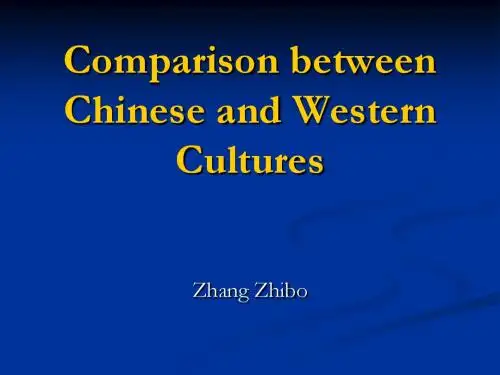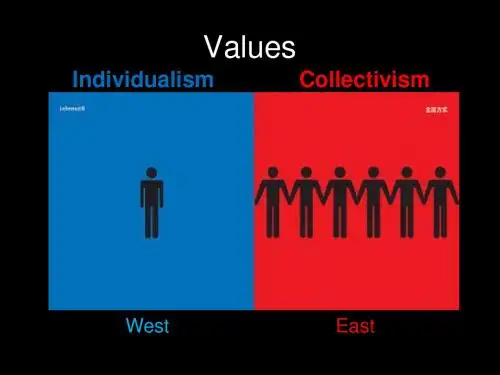中西文化比较与翻译赏析课件
- 格式:ppt
- 大小:1.50 MB
- 文档页数:32
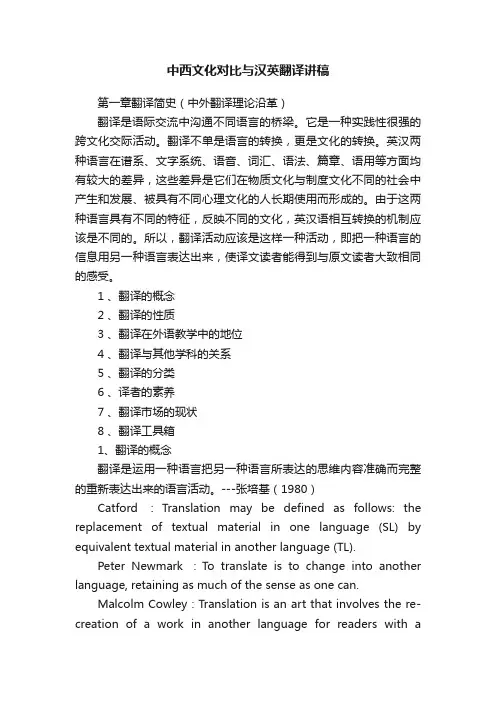
中西文化对比与汉英翻译讲稿第一章翻译简史(中外翻译理论沿革)翻译是语际交流中沟通不同语言的桥梁。
它是一种实践性很强的跨文化交际活动。
翻译不单是语言的转换,更是文化的转换。
英汉两种语言在谱系、文字系统、语音、词汇、语法、篇章、语用等方面均有较大的差异,这些差异是它们在物质文化与制度文化不同的社会中产生和发展、被具有不同心理文化的人长期使用而形成的。
由于这两种语言具有不同的特征,反映不同的文化,英汉语相互转换的机制应该是不同的。
所以,翻译活动应该是这样一种活动,即把一种语言的信息用另一种语言表达出来,使译文读者能得到与原文读者大致相同的感受。
1 、翻译的概念2 、翻译的性质3 、翻译在外语教学中的地位4 、翻译与其他学科的关系5 、翻译的分类6 、译者的素养7 、翻译市场的现状8 、翻译工具箱1、翻译的概念翻译是运用一种语言把另一种语言所表达的思维内容准确而完整的重新表达出来的语言活动。
---张培基(1980)Catford :Translation may be defined as follows: the replacement of textual material in one language (SL) by equivalent textual material in another language (TL).Peter Newmark :To translate is to change into another language, retaining as much of the sense as one can.Malcolm Cowley:Translation is an art that involves the re-creation of a work in another language for readers with adifferent background.Eugene Nida:奈达定义的三个优点明确地说明了要译的是什么(信息message)暗示了由于语言文化上的差异,原文和译文只能做到相对的对等(closest)考虑了译文的可接受性Some Definitions by Modern Translation TheoristsGideon Toury:“A translation is taken to be any target-language utterance which is presented or regarded as such within the target cultur:e, on whatever grounds.”Christiane Nord“Translation is the production of a functional target text maintaining a relationship with a given source text that is specified according to the intended or demanded function of the target text.”Jean Sager:“Translation is an externally motivated industrial activity, supported by information technology, which is diversified in response to the particular needs of this fo rm of communication.”吕俊:“翻译是一种跨文化的信息交流与交换活动,其本质是传播,是传播学中一个有特殊性质的领域。
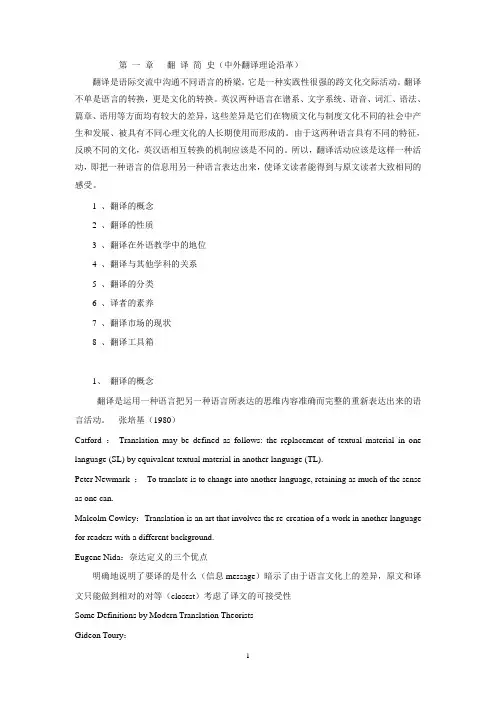
第一章翻译简史(中外翻译理论沿革)翻译是语际交流中沟通不同语言的桥梁。
它是一种实践性很强的跨文化交际活动。
翻译不单是语言的转换,更是文化的转换。
英汉两种语言在谱系、文字系统、语音、词汇、语法、篇章、语用等方面均有较大的差异,这些差异是它们在物质文化与制度文化不同的社会中产生和发展、被具有不同心理文化的人长期使用而形成的。
由于这两种语言具有不同的特征,反映不同的文化,英汉语相互转换的机制应该是不同的。
所以,翻译活动应该是这样一种活动,即把一种语言的信息用另一种语言表达出来,使译文读者能得到与原文读者大致相同的感受。
1 、翻译的概念2 、翻译的性质3 、翻译在外语教学中的地位4 、翻译与其他学科的关系5 、翻译的分类6 、译者的素养7 、翻译市场的现状8 、翻译工具箱1、翻译的概念翻译是运用一种语言把另一种语言所表达的思维内容准确而完整的重新表达出来的语言活动。
---张培基(1980)Catford :Translation may be defined as follows: the replacement of textual material in one language (SL) by equivalent textual material in another language (TL).Peter Newmark :To translate is to change into another language, retaining as much of the sense as one can.Malcolm Cowley:Translation is an art that involves the re-creation of a work in another language for readers with a different background.Eugene Nida:奈达定义的三个优点明确地说明了要译的是什么(信息message)暗示了由于语言文化上的差异,原文和译文只能做到相对的对等(closest)考虑了译文的可接受性Some Definitions by Modern Translation TheoristsGideon Toury:―A translation is taken to be any target-language utterance which is presented or regarded as such within the target cultur:e, on whatever grounds.‖Christiane Nord―Translation is the production of a functional target text maintaining a relationship with a given source text that is specified according to the intended or demanded function of the target text.‖Jean Sager:―Translation is an externally motivated industrial activity, supported by information technology, which is diversified in response to the particular needs of this fo rm of communication.‖吕俊:―翻译是一种跨文化的信息交流与交换活动,其本质是传播,是传播学中一个有特殊性质的领域。
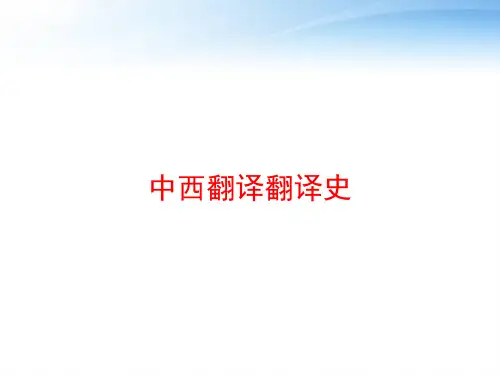
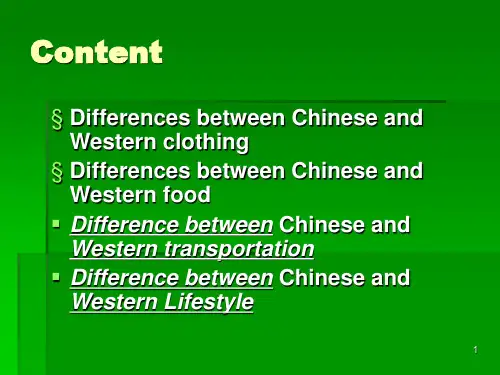
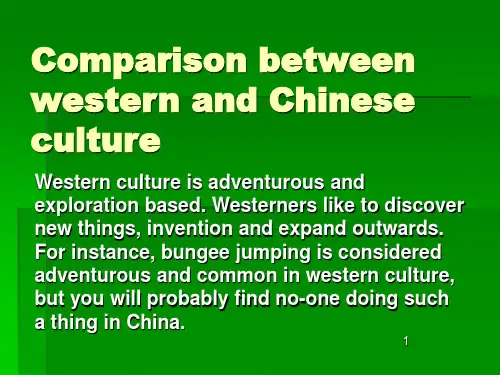
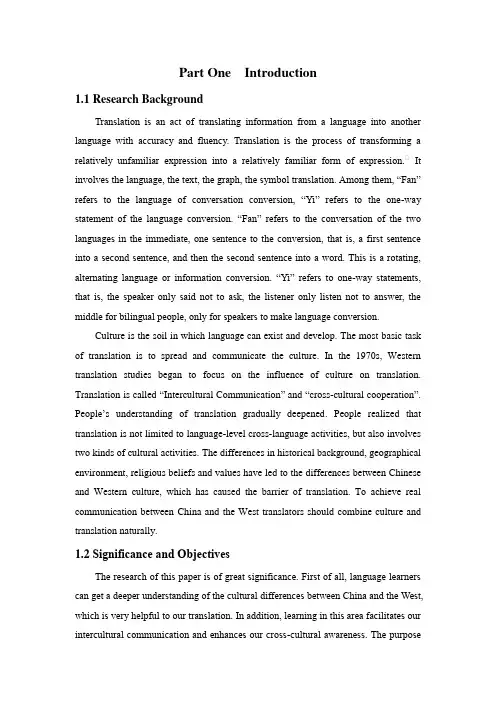
Part One Introduction 1.1 Research Background Translation is an act of translating information from a language into another language with accuracy and fluency. Translation is the process of transforming a relatively unfamiliar expression into a relatively familiar form of expression.① It involves the language, the text, the graph, the symbol translation. Among them, “Fan” refers to the language of conversation conversion, “Yi” refers to the one-way statement of the language conversion. “Fan” refers to the conversation of the two languages in the immediate, one sentence to the conversion, that is, a first sentence into a second sentence, and then the second sentence into a word. This is a rotating, alternating language or information conversion. “Yi” refers to one-way statements, that is, the speaker only said not to ask, the listener only listen not to answer, the middle for bilingual people, only for speakers to make language conversion. Culture is the soil in which language can exist and develop. The most basic task of translation is to spread and communicate the culture. In the 1970s, Western translation studies began to focus on the influence of culture on translation. Translation is called “Intercultural Communication” and “cross-cultural cooperation”. People’s understanding of translation gradually deepened. People realized that translation is not limited to language-level cross-language activities, but also involves two kinds of cultural activities. The differences in historical background, geographical environment, religious beliefs and values have led to the differences between Chinese and Western culture, which has caused the barrier of translation. To achieve real communication between China and the West translators should combine culture and translation naturally. 1.2 Significance and Objectives The research of this paper is of great significance. First of all, language learners can get a deeper understanding of the cultural differences between China and the West, which is very helpful to our translation. In addition, learning in this area facilitates our intercultural communication and enhances our cross-cultural awareness. The purpose of this paper is to promote cultural exchanges between China and the West, and to promote cross-cultural communication with other countries by understanding the cultural differences between China and the west and translating strategies. 1.3 Structure of the Thesis In order to systematically analyze the cultural differences between China and the west, this paper will be divided into four parts. The first part is a comprehensive introduction to this research. The second part introduces the relationship between culture and translation. It also introduces the factors that influence the differences between Chinese and Western cultures, including geographical environment, social customs, religions and values. The third part will introduce the translation of methods, including foreignization, domestication, transformation and annotation. In this order, I will analyze the influence of cultural differences on translation.
